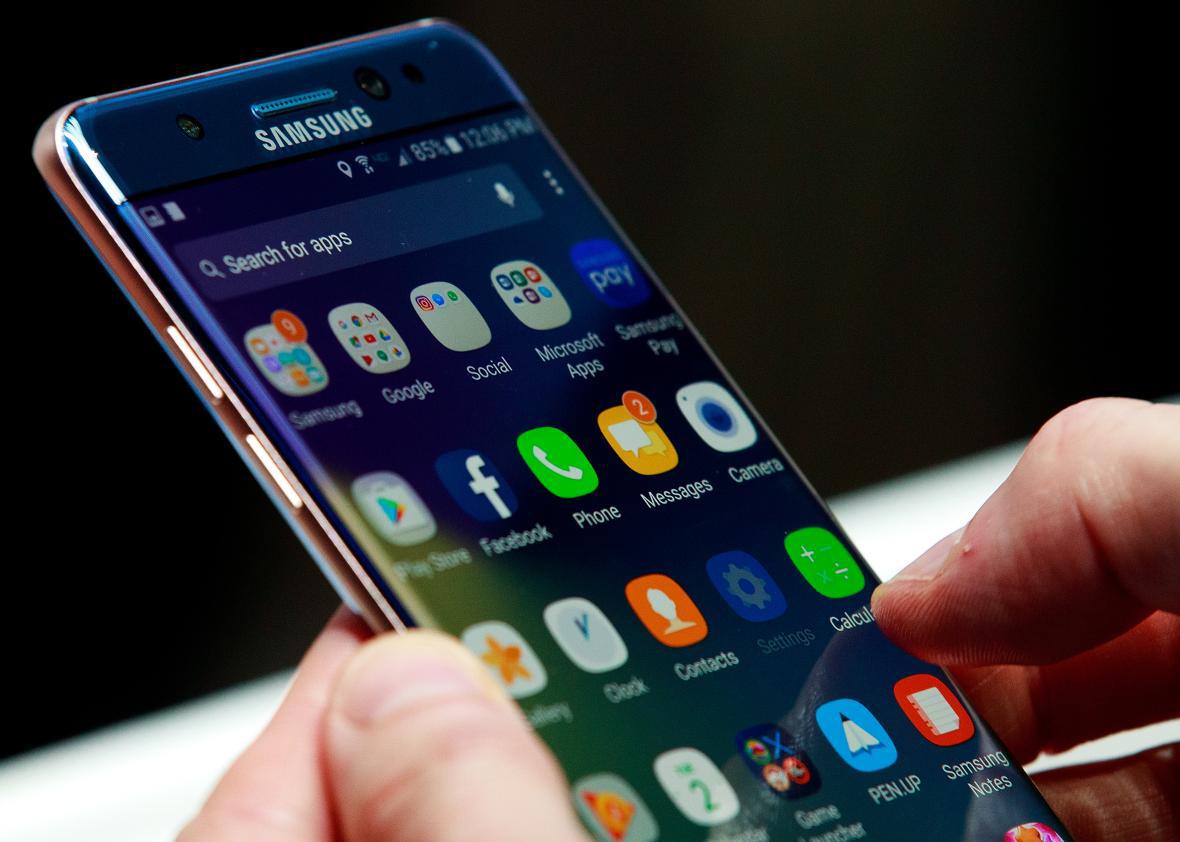This post originally appeared on The Conversation.
Most accidents caused by smartphones stem from distracted drivers or pedestrians. But a phone that bursts into flames—as Samsung’s Galaxy Note 7s have been doing—comes with the scariness of uncertainty, especially when these fires take place in airplane cabins.
From the publicly available information, it doesn’t seem that Samsung knows the actual technicalities of the problem, and external experts know even less. This uncertainty could cause consumer confidence to wobble, which makes it vital for the whole industry to identify and fix the problem as quickly as possible. In the meantime, Samsung has warned the debacle could cost the company more than $2 billion over the next six months, on top of the costs of recalling millions of handsets.
The sheer scale of the problem could, however, be a unique opportunity to improve battery safety across the industry for the future. If Samsung made its faulty batteries available to researchers, it could effectively crowd-source work into why they went wrong. This would provide much-needed insight into how batteries and their manufacture could be improved.
Scientists and engineers in battery research, both in industry and academia, have a closely related problem. Research on battery safety is more important than ever, but it is very difficult to get hold of batteries that are actually faulty. You can artificially introduce obstacles into a model production line, but then you are only investigating a self-created problem, which limits potential to learn new lessons.
The Note 7 recall could provide researchers with a huge batch of potentially faulty batteries. Samsung, with its millions of recalled handsets, could turn a corporate and environmental nightmare into a benefit for scientific research by initiating a global crowd-sourcing consortium of hundreds of academic battery laboratories.
One of the big questions is exactly what’s going wrong with the Note 7 batteries. A previous mass recall of faulty batteries by Sony in 2006 was down to the presence of small metal particles left in the battery cells by the manufacturing process. As the battery was charged and discharged, or put under mechanical pressure, these particles led to the growth of little trees of metallic lithium known as dendrites in one of the electrodes. These eventually penetrated the battery’s other electrode and caused a short circuit. They then heated up like a wire in a traditional light bulb and ignited the flammable electrolyte in the cell, consuming oxygen from the positive electrode material.
Nobody yet knows if the Note 7 battery has suffered a similar problem. Today’s battery technology has moved on, packing more energy into the same space than in 2006. Modern batteries are built using advanced manufacturing techniques that coat powerful thin layers of active electrode materials onto thin aluminum and copper foils.
Metal particles of the kind that caused the problems back in 2006—big rocks in relation to the tiny structures in today’s batteries—would cause modern batteries to fail before they leave the factory. But the Note 7 battery problem could be caused by much smaller dust-type particles, small voids in the electrode material or just manufacturing inconsistencies.
All lithium ion batteries undergo the so-called “formation” process after the mechanical manufacturing. This involves charging and discharging them a fixed number of times in a way that forms internal protection layers and allows any side-reaction to happen in a controlled way. Cells that show any irregularities will be recycled. But this process can’t (yet) detect symptoms that would point towards a future failure. We would know about such a problem only once hundreds of thousands of units have been manufactured.
But Samsung’s problem gives us an opportunity to study battery failure in much greater depth. This could allow us to improve future manufacturing technology and defect detection. By agreeing a portfolio of diagnosis methods with the firm, scientists around the world could find out what’s wrong with the faulty cells. They could also work out methods to spot problem cells before they dangerously heat up, and fix the production process accordingly and introduce a new post-production check.
The biggest problem perhaps would be Samsung’s guarding of its intellectual property, which may explain why the company hasn’t had its Note 7 batteries tested externally already, despite it being considered good practice in the industry. But the risk of corporate damage resulting from the disclosure of a few company secrets would arguably be much smaller than that caused to consumer confidence by battery failures on any future models.
